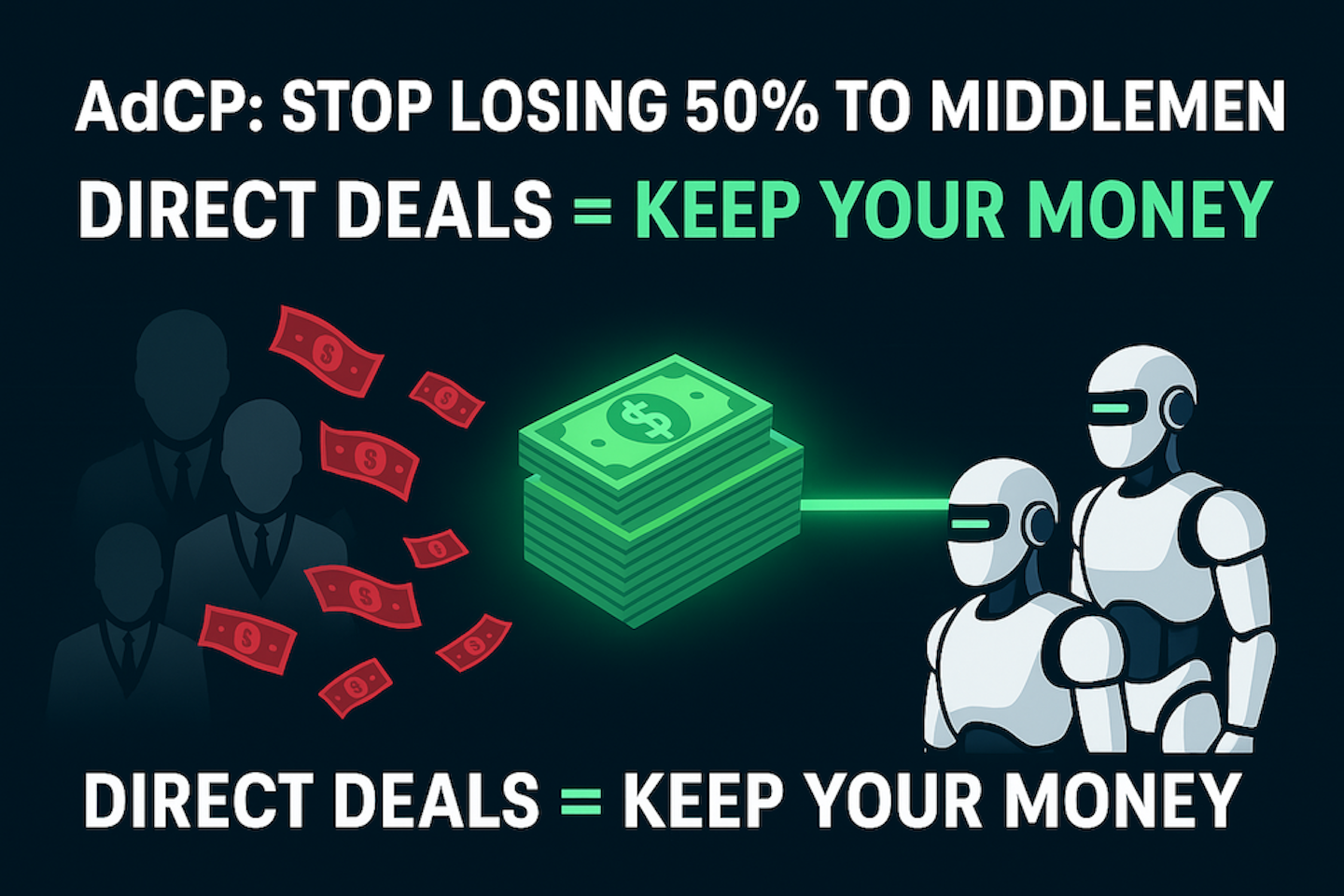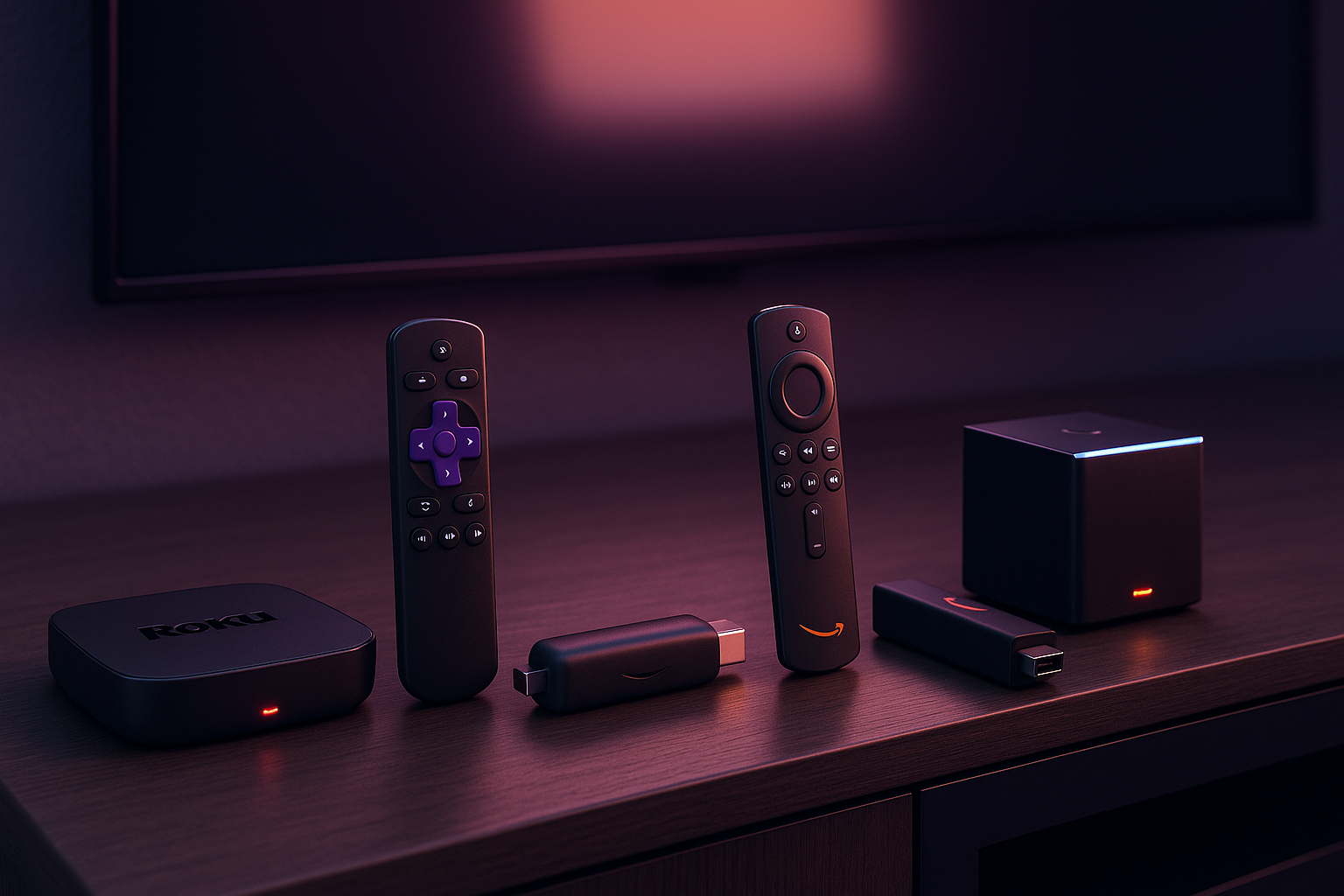AdCP: Finally, Someone’s Fixing the Hot Mess That Is CTV and FAST Advertising
Or: How AI Agents Might Actually Save Streaming Ads From Themselves
Look, we need to talk about streaming ads.
CTV and FAST channels are absolutely blowing up right now. We’re talking $47 billion for CTV by 2028. FAST channels tripling from $6B to $18B. Those are massive numbers. But here’s the thing nobody wants to say out loud: buying ads on these platforms is an absolute nightmare.
There are over 1,900 FAST channels scattered across dozens of platforms. Buying campaigns feels like trying to order food from 47 different restaurants that all speak different languages and use different menus. It’s exhausting, expensive, and half the time you’re not even sure what you got.
Enter AdCP (Ad Context Protocol) – a new open standard that just launched in October 2025, and honestly? It might actually fix this mess.
What the Hell Is AdCP?
In the simplest terms: AdCP lets AI agents talk to each other about buying and selling ads, using plain English instead of proprietary mumbo-jumbo.
Built by a crew of 20+ ad tech companies (Yahoo, PubMatic, Magnite, Triton Digital, and others), it’s basically OpenRTB for the AI era.
The brain trust behind this includes Brian O’Kelley – yeah, THE Brian O’Kelley who basically invented programmatic advertising. As my friend Rob puts it: “Brian has been a driving force here… We had a lot of hope with programmatic, I hope we can learn the lessons of the past and do better this time!”
Here’s how it works: Instead of logging into 15 different platforms and manually setting up campaigns, you just tell an AI agent what you want: “Find cord-cutters who watch cooking shows on FAST channels, budget $50k”. The agent figures it out. Finds the inventory. Negotiates the deal. Done. Magic? Nope. Just really good standards.
The CTV/FAST Dumpster Fire (That We’re All Pretending Is Fine)
Before we get into how AdCP fixes things, let’s be real about the problems:
Problem #1: Fragmentation So Bad It Makes Your Head Spin
There are 1,900+ FAST channels globally. FAST CHANNELS. Not platforms, not apps—individual channels. You can’t just “buy USA Network” across all of them like you could with cable. Each platform has its own flavour, its own setup, its own technical requirements. It’s chaos with a capital C. As one industry report bluntly put it: “This is great for viewers but not so great for ad buyers. No kidding.
Problem #2: Ad Fill Rates That Suck
FAST channels can’t fill their ad slots. Like, at all. You know those awkward moments when you’re watching a free streaming channel and you get the same slate card five times in a row? Or dead air? Or they just skip the ad break entirely? That’s because the ads haven’t caught up to the content explosion. There are too many places to advertise and not enough efficient ways to match advertisers with inventory. Publishers are literally burning money because they can’t sell the inventory they have.
Problem #3: The Black Box of Death
Right now, CTV and FAST ads go through SO many intermediaries (DSPs, SSPs, ad exchanges, more SSPs, probably a guy named Carl) that by the time your ad runs, you have no idea:
- Where it actually showed up
- What show it ran against
- Who saw it
- Where half your money went
Seriously, intermediaries can eat up 50% of your gross revenue. FIFTY PERCENT. As Rob notes: “Finding out who was at fault for issues used to be a complete nightmare… The opacity of programmatic’s intermediary layers meant that when something went wrong, accountability just evaporated into a black box of exchanges, SSPs, and DSPs.”
Problem #4: Measurement Is… Let’s Call It “Creative”
Every platform has different metrics. Different definitions of “viewable.” Different attribution models. Trying to measure a cross-platform CTV campaign is like trying to compare temperatures when everyone’s using different thermometers. Brands are basically throwing money at streaming and hoping for the best.
How AdCP Actually Fixes This Stuff
Direct Deals, No Middlemen
AdCP flips the whole model. Instead of auctions happening through 47 layers of middlemen, buyer agents talk directly to seller agents. Want to buy cooking show inventory on FAST channels? Your agent pings publisher agents directly: “Hey, got any cooking shows with good completion rates?” They respond with inventory, pricing, and audience data. You pick what you want. Done.
“AdCP’s design includes verified authorisation,” Rob explains, “which lets buyers confirm publisher authorisation before buying inventory. The protocol flips the traditional auction flow so advertiser agents talk directly with publisher agents, cutting out the intermediary bid streams that hide where the money’s actually going.” Translation: You can finally see where your money goes and who you’re actually buying from. Transparency That Actually Means Something
Here’s where it gets good. AdCP creates audit trails for EVERYTHING. Platforms like Swivel (one of the founding members) log every single conversation between agents. Every query, every offer, every transaction. It’s all documented.
Rob calls this “machine transparency” and points out something crucial: “When transactions are opaque, fraud thrives. AdCP’s machine transparency and auditability mean every transaction can be verified by both parties.” For CTV advertisers worried about appearing next to sketchy content or fake streaming inventory? This is huge. You can now actually verify what you bought and block bad actors at the ad server level.
“Selling Rolexes next to fakes is a way to remove money from the market,” Rob notes. “Being able to select only quality publishers gives you confidence to pay the appropriate price.” Publishers Keep Their Data (Finally!) This one’s massive for FAST channels.
Right now, publishers have great first-party data but giving it to programmatic platforms means losing control. With AdCP, publishers can expose their data to buyers WITHOUT handing over the keys. Optable, one of AdCP’s founding members, specialises in exactly this – privacy-first data collaboration. Publishers maintain ownership while still letting advertisers target effectively.
For FAST channels sitting on valuable viewer data, this is game-changing. They can finally monetise what they know without getting screwed. Premium Inventory Becomes Actually Buyable. Private marketplaces in CTV right now? They’re a joke. Manual setup. Months of integration work. Operational nightmares.
AdCP changes this completely:
- Publishers can create any ad product on the fly, no matter how niche
- Integration goes from months to days
- Flexible pricing models (by audience, completion rate, engagement, whatever)
Want to sponsor weather content only when it’s raining in specific markets? Done. Want to buy sports inventory only during live games? Easy. Want to combine audio podcasts with CTV campaigns? No problem.
Real Examples That Don’t Suck
Example 1: Weather-Based FAST Campaigns
The Weather Company (a launch member) can now easily offer: “Show cold medicine ads on FAST news channels in regions with flu outbreaks.” Your agent queries their agent, gets pricing, executes the buy. No integration needed. No six-month setup process.
Example 2: Cross-Channel Sports Campaigns
Triton Digital (another founding member) does audio streaming and podcasts. Want to hit sports fans on CTV during games AND follow them to sports podcasts? With AdCP: “Find sports enthusiasts on CTV during live games and on sports podcasts on Triton’s network.” One request. Multiple channels. Actually coordinated.
Example 3: Local FAST Advertising
Local restaurants want in on FAST but don’t have million-dollar agencies. With AdCP: “Advertise lunch specials on cooking FAST channels within 10 miles of our locations, targeting families.” The agent handles it. No ad tech PhD required.
Why This Actually Matters for CTV/FAST
Here’s the bottom line: CTV and FAST are growing like crazy, but the infrastructure to support them is broken.
AdCP offers a real path forward:
✅ Cuts through the 1,900+ channel fragmentation
✅ Eliminates 50% of your budget disappearing into intermediary fees
✅ Gives you actual transparency on where ads run
✅ Makes premium inventory accessible without months of setup
✅ Lets publishers monetise their data without losing it
✅ Works in a privacy-first, post-cookie world
For CTV and FAST specifically, this could be the infrastructure upgrade that finally makes these channels work like they should have from the beginning.
What Happens Next?
AdCP just launched in October 2025. Version 2.0 went live with production-ready features. Over the next few months, we’ll see: – Publishers implementing AdCP endpoints – Buyers testing agentic workflows – The Curation Protocol launching (Q2 2025) for brand safety – Real campaign data showing if this actually works.
And here’s where it gets interesting for FAST channels: The success of AdCP depends on publishers actually implementing it. Every FAST channel that adds AdCP support makes the entire ecosystem more valuable. But let’s be real – nobody really knows what they’re doing yet. This stuff literally just launched. If you’re running FAST channels and thinking “this sounds great but I have no idea where to start” – same. We’re all figuring this out together.
At FAST TV, we’re diving into AdCP implementation right alongside everyone else. Is it new? Yep. Do we have all the answers? Nope. But we’re excited to learn and experiment with channel operators who want to be early adopters. Here’s our thinking: instead of every FAST channel trying to figure out AdCP on their own, why not learn together?
We can:
- Experiment with AdCP endpoints (and figure out what actually works)
- Test ad server integrations (and share what breaks)
- Play with first-party data exposure (keeping you in control the whole time)
- Translate your inventory into agent-speak (turns out AI likes things described a certain way)
Think of us as your co-pilot in figuring this out. We’re not selling you a polished, proven solution because honestly, nobody has one yet. But we are saying: “Hey, this looks important, let’s learn it together instead of alone.”
Early adopters of AdCP will probably get:
- First crack at agentic demand (seems like it’s growing)
- Better pricing through transparency (that’s the theory anyway)
- Direct buyer relationships (fewer middlemen taking cuts)
- A head start while everyone else waits to see what happens
Brian O’Kelley’s prediction: “Agentic advertising is too big, too important, and too obvious not to become the dominant paradigm.” Maybe he’s right. Maybe this is header bidding all over again – a genuinely transformative standard that everyone adopts. Or maybe it joins the graveyard of good ideas that nobody used. But for FAST channel operators? Waiting 18 months to see what happens means watching from the sidelines while early adopters figure out what works.
If you’re interested in exploring AdCP for your FAST channels, hit us up. We don’t have all the answers, but we’re happy to learn together and share what we figure out. Worst case? We all learn something new. Best case? We’re positioned ahead of the curve when agentic advertising actually takes off. Either way, beats sitting around wondering “should we have done something about that?” Because the alternative – continuing with the fragmented, opaque, inefficient mess we have now – isn’t working for anyone. Except maybe Carl the middleman. And we dont care much for that guy.




Related news
View all


